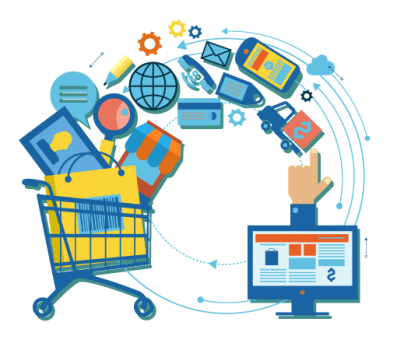An e-commerce payment system is one that is used to accept paperless money transactions. The speed and simplicity with which e-commerce payment systems can be established and used have contributed to their widespread use. Here we look at different systems including the benefits and disadvantages.
Credit cards
Credit cards are the most common payment method for e-commerce transactions. Each credit card has a unique number that attaches it to an account. The embedded magnetic strip contains all the credit card details a merchant needs. When a customer makes a purchase with a credit card, the bank that issued the credit card pays the bill on behalf of the customer and customer can then arrange to pay the credit card bill at a later date. Credit cards usually charge a transaction fee to the business and sometimes the customer, which makes them less attractive to use. Another disadvantage is that if the customer does not pay the monthly credit card statement in full, interest will begin to accrue until the balance is cleared.
To obtain a credit card, the customer must put in a request to an issuer. The issuer can choose to refuse the card application if they assess the level of risk from the individual is outside their prescribed limits. Once a credit card is issued, the customer can use the credit card information online and offline to purchase a service or product. A credit card does not require the customer to have money in a linked bank account, but a credit limit is set by the company.

Debit Card
Payment via a debit card is deducted from the card’s bank account immediately, so a sufficient balance in bank account is necessary for the transaction to complete. Debit cards have become more popular since additional security measures ensure transactions are more secure. This includes the use of the card verification number, and the requirement for merchants to have security protocol and procedures in place. Debit card charges are lower.
Smart Card
The use of smart-cards is popular in China and India, where credit card security concerns remain high. A smart-card looks and works similar to a credit card, but an embedded 8-bit microprocessor uploads cash from the consumer’s bank account to their smart-card. All information on the smart-card is encrypted. When making a purchase, the smart-card can transfer money to the sellers’ device, but only by using the customer’s PIN. Smart-cards are less expensive and provide faster processing than credit cards. Examples of smart-cards include Mondex and Visa Cash cards.
E-Money
E-Money transactions are when money moves from one financial body to another financial body without the need for a middle-man. Examples of the use of e-money transaction include online payments via credit card, debit card or smart card.
Electronic Fund Transfer (EFT)
A very popular electronic payment method to transfer money from one bank account to another, either in the same bank or a different bank. Customers have a personal login to the bank’s website where they can create a transfer to another bank account within the same bank, or to an outside bank. An Automated Clearing House will transfer funds to an outside bank and deduct the sum from the customers account, at which point the customer is notified of the fund transfer completion.


